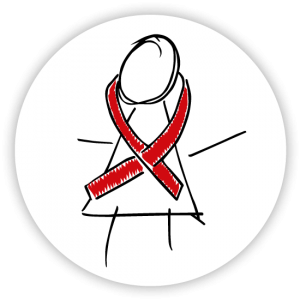Tenofovir-containing ART reduces bone mineral density in breast feeding women: results from IMPAACT P1084s
1 October 2016. Related: Conference reports, Antiretrovirals, Pregnancy, Paediatric care, Paediatric Workshop 8 Durban 2016.
Tenofovir DF containing ART decreases bone mineral density in HIV positive, breast feeding women, according to findings presented at the 8th International Workshop on HIV Paediatrics.
Both HIV and breast feeding (3-10% decline at 12 months) increase the risk of low bone mineral density (BMD). Antiretrovirals can also decrease BMD, and there has been particular concern about the impact of tenofovir DF.
A bone and kidney health sub study of the PROMISE trial – IMPAACT P1084s – included an evaluation of the effect of postnatal antiretroviral exposure on BMD among HIV positive breastfeeding women.
IMPAACT P1084s enrolled eligible mother-infant pairs from Zimbabwe, Uganda, South Africa and Malawi. The mothers and their uninfected infants had been randomised in the postpartum component of the PROMISE trial to receive either maternal tenofovir-based ART (TDF-ART) or infant nevirapine prophylaxis (NVP) for prevention of transmission while breastfeeding. At the time of enrolment mothers did not meet the criteria for starting ART.
Baseline characteristics were similar between the study arms: median age 26.5 years (23.3-30.0), BMI 24.7 kg (22.3-28.0), CD4 count 671.5 cells/mm3 (544.0-857.5) and viral load 400 copies/mL (86-2289). Median time to cessation of breastfeeding was 61 weeks.
The investigators measured maternal lumbar spine and hip BMD using DXA soon after delivery (5-21 days) and at approximately 74 weeks postpartum. They compared maternal ART to no maternal ART for per cent change in BMD between delivery and week 74 at the lumbar spine (primary outcome) and hip (analyses were ITT).
BMD decline between delivery and postpartum was significantly greater in women receiving ART during breast feeding compared with no ART.
Lumbar spine BMD per cent declined by: -2.06 (95% CI -2.9 to -1.23) in the TDF-ART arm (n=167) vs +1.09 (95% CI 0.11 to 2.07) in the NVP arm (n=170) giving a mean difference of -3.16% (95% CI -4.44 to -1.84), p<0.001.
Hip BMD per cent declined by: -5.37 (95% CI -5.99 to -4.76) in the TDF-ART arm (n=169) vs -3.05 (95% CI -3.72 to -2.38) in the NVP arm (n=166) giving a mean difference of -3.23% (95% CI -3.23 to -1.42), p<0.001.
The investigators were not able to show if BMD returned to baseline after cessation of breastfeeding. They concluded that these data “highlight the importance of BMD in settings where breastfeeding is standard as we enter the Treat All era”.
Reference:
Stranix-Chibanda L et al. Impact of tenofovir-containing triple antiretroviral therapy (ART) on bone mineral density in HIV-infected breastfeeding women in sub-Saharan Africa. 8th International Workshop on HIV Paediatrics, 15-16 July 2016, Durban, South Africa. Oral abstract O_020.


